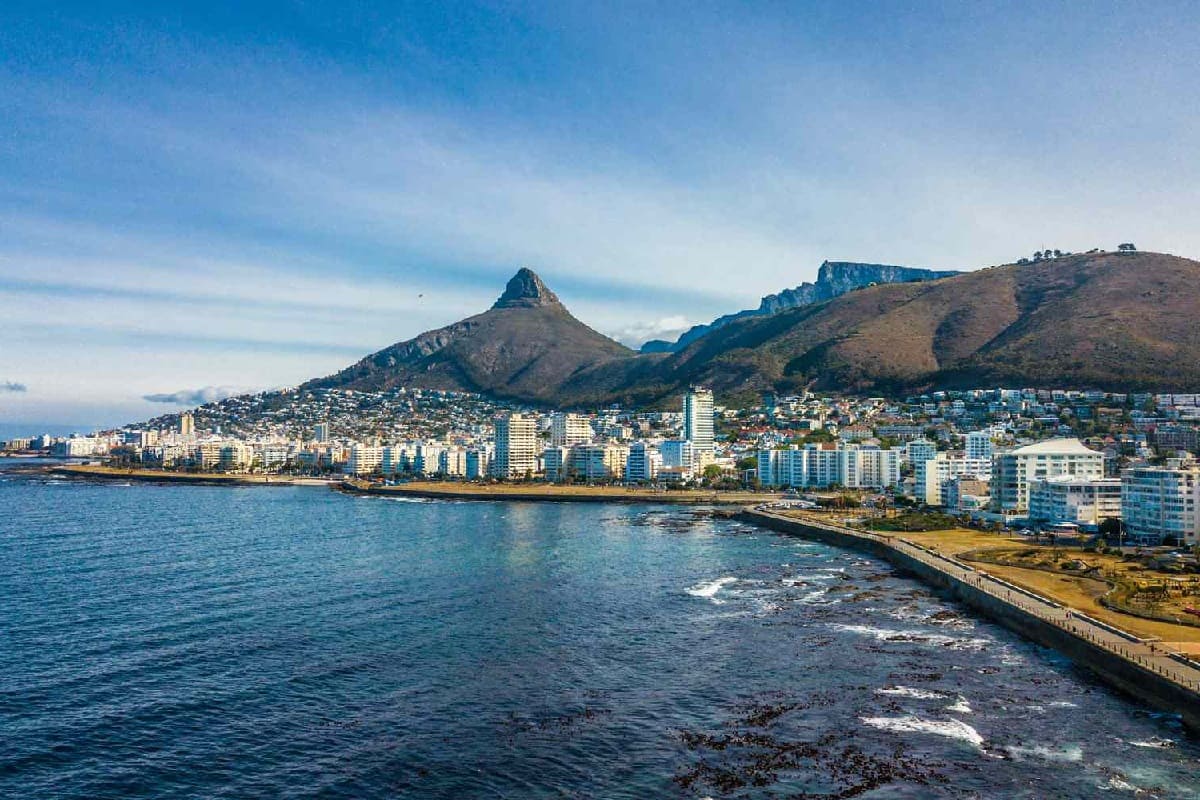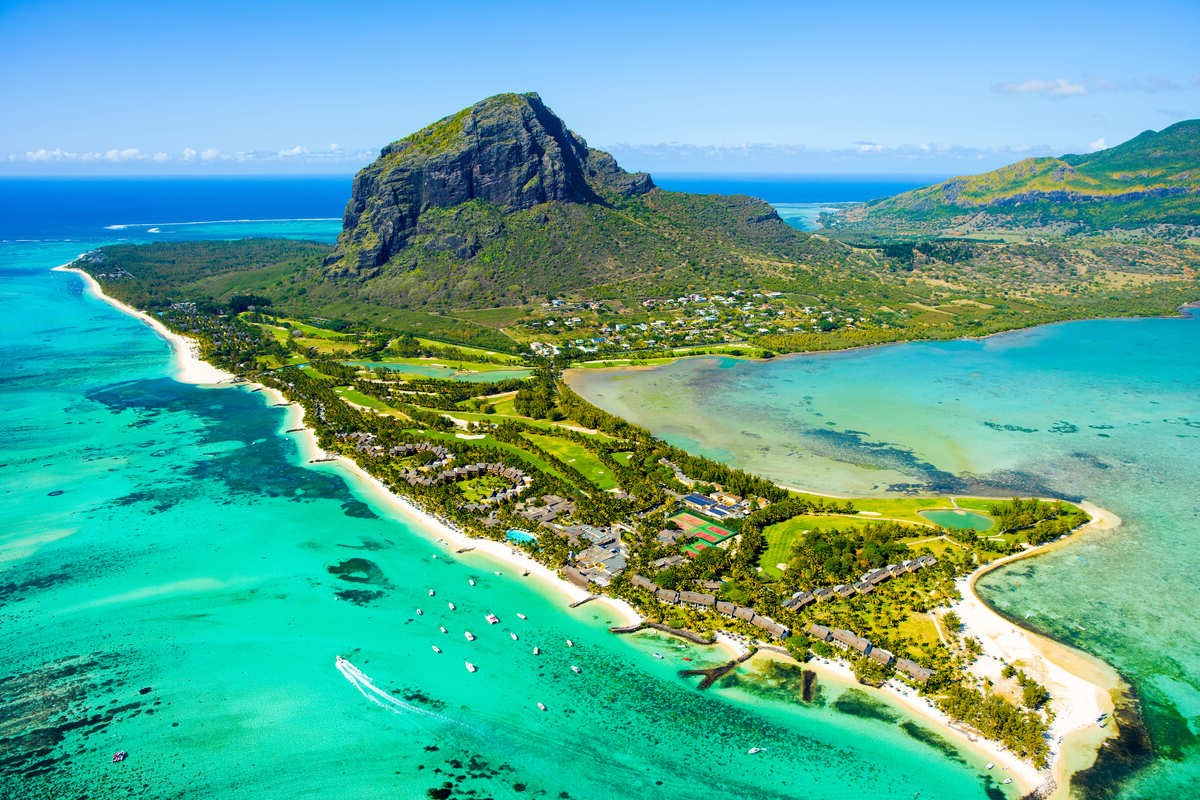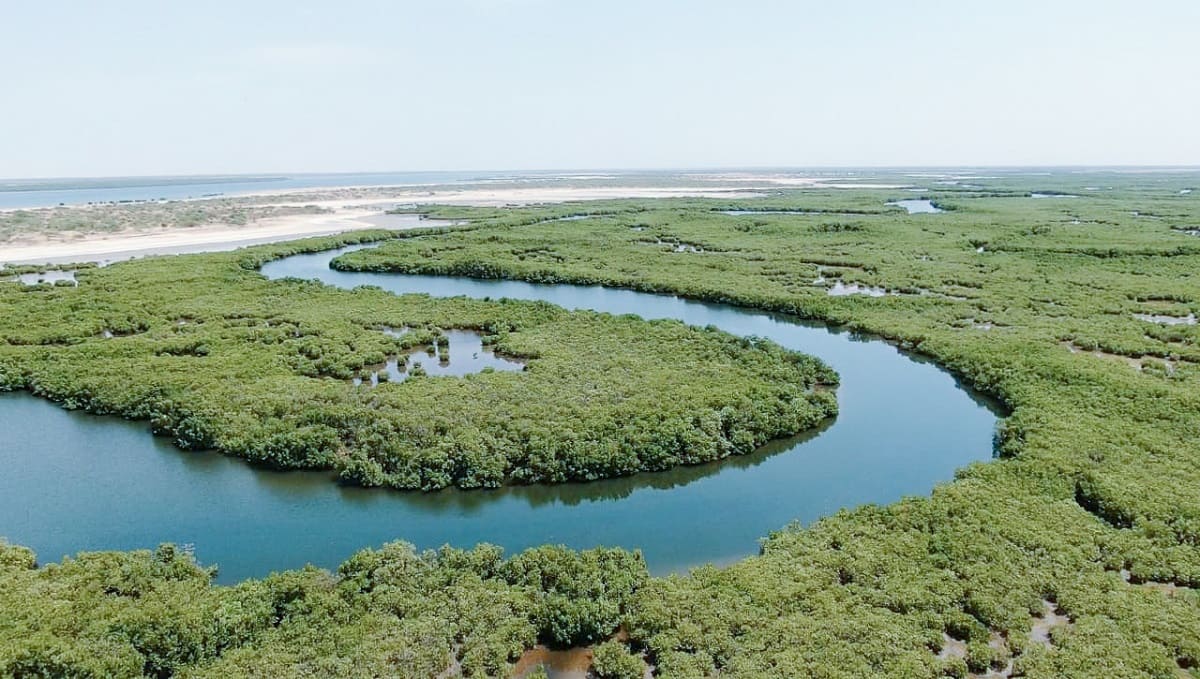Home>Weather and Climate>Understanding The Climate Of South Africa: A Comprehensive Guide


Weather and Climate
Understanding The Climate Of South Africa: A Comprehensive Guide
Published: March 1, 2024
Discover the diverse weather and climate of South Africa with our comprehensive guide. Gain insights into the unique climatic conditions and seasonal variations.
(Many of the links in this article redirect to a specific reviewed product. Your purchase of these products through affiliate links helps to generate commission for Temperatures.com, at no extra cost. Learn more)
Table of Contents
Introduction
South Africa, a land of diverse landscapes and rich cultural heritage, is renowned for its breathtaking natural beauty and unique climatic conditions. From the iconic Table Mountain to the vast savannas of the Kruger National Park, this country offers a tapestry of climates that captivate the imagination. Understanding the climate of South Africa is essential for appreciating the intricate balance between its natural ecosystems and human activities.
The climate of South Africa is as diverse as its people, encompassing a wide range of climatic zones, each with its own distinct characteristics. From the arid deserts of the west to the lush coastal regions of the east, the country's climate is a reflection of its geographical diversity. Moreover, the impact of climate change has become an increasingly pressing concern, prompting the need for sustainable adaptation and mitigation strategies.
In this comprehensive guide, we will delve into the geographical features that shape South Africa's climate, explore the various climatic zones that define the country, and examine the factors that influence its weather patterns. Additionally, we will analyze the seasonal variations that occur throughout the year and assess the impact of climate change on this diverse nation. Furthermore, we will discuss the adaptation and mitigation strategies that are being implemented to address the challenges posed by a changing climate.
Join us on a journey through the dynamic climate of South Africa, where we will unravel the complexities of its weather systems and gain a deeper understanding of the profound influence of climate on the country's ecosystems and inhabitants. Let's embark on this enlightening exploration of South Africa's climate, where nature's wonders and human resilience converge in the face of environmental change.
Read more: Monthly Temperature Guide for South Africa
The Geography of South Africa
South Africa, located at the southern tip of the African continent, boasts a diverse and captivating geography that encompasses a wide array of natural wonders. From the rugged Drakensberg Mountains to the expansive Kalahari Desert, the country's landscape is a testament to the forces of nature that have shaped it over millions of years.
One of the defining features of South Africa's geography is its extensive coastline, stretching over 2,500 kilometers along the South Atlantic and Indian Oceans. This coastal expanse not only contributes to the country's moderate climate in certain regions but also supports a rich marine ecosystem, including diverse marine life and pristine beaches that attract visitors from around the world.
Inland, South Africa's terrain is characterized by a blend of plateaus, valleys, and plains, with the iconic veld (grassland) dominating much of the landscape. The Highveld, situated in the interior of the country, is renowned for its undulating hills and fertile soils, making it an important agricultural region. In contrast, the Lowveld, located to the northeast, features vast savannas and is home to an abundance of wildlife, including the famed Big Five.
The geography of South Africa is also punctuated by several mountain ranges, such as the aforementioned Drakensberg Mountains, which form a dramatic escarpment along the eastern border. These mountains not only contribute to the country's scenic beauty but also play a crucial role in influencing local weather patterns and supporting unique ecosystems, including alpine flora and fauna.
Furthermore, South Africa is home to a variety of unique geological formations, including the otherworldly landscapes of the Cederberg and the awe-inspiring Blyde River Canyon. These natural wonders serve as a testament to the geological forces that have sculpted the country's terrain over millennia, offering a glimpse into the Earth's tumultuous history.
In essence, the geography of South Africa is a tapestry of diverse landscapes, from coastal plains to mountainous regions, each contributing to the country's rich natural heritage and influencing its climate in profound ways. Understanding the geographical features of South Africa is essential for comprehending the intricate interplay between its terrain and the climatic conditions that define this captivating nation.
The Climate Zones of South Africa
South Africa is characterized by a diverse range of climate zones, each contributing to the country's unique environmental tapestry. These climate zones are influenced by various factors, including latitude, altitude, and proximity to the ocean, resulting in a mosaic of weather patterns and ecological habitats. Understanding these distinct climate zones is essential for appreciating the country's rich natural diversity and the challenges posed by its varied climatic conditions.
-
Mediterranean Climate: The southwestern region of South Africa, including Cape Town and the Western Cape, experiences a Mediterranean climate characterized by mild, wet winters and warm, dry summers. This climate zone is influenced by the cold Benguela Current, which moderates temperatures along the coast, creating favorable conditions for viticulture and supporting unique fynbos vegetation.
-
Semi-Arid and Arid Climates: The central and northwestern parts of South Africa, including the Northern Cape and parts of the Free State, are dominated by semi-arid and arid climates. These regions receive minimal rainfall and are characterized by vast expanses of desert and semi-desert landscapes, such as the Kalahari and the Richtersveld. The arid climate presents challenges for agriculture and necessitates adaptive strategies for sustainable land use.
-
Subtropical Climate: Along the eastern coast of South Africa, from KwaZulu-Natal to the border with Mozambique, a subtropical climate prevails. This region experiences hot, humid summers and mild winters, with abundant rainfall supporting lush vegetation and diverse ecosystems. The subtropical climate zone is renowned for its rich biodiversity and is home to iconic wildlife reserves such as iSimangaliso Wetland Park and Hluhluwe-iMfolozi Park.
-
Highveld and Lowveld Climates: Inland, the Highveld and Lowveld regions exhibit distinct climatic characteristics. The Highveld, encompassing parts of Gauteng and Mpumalanga, experiences a temperate climate with cold, dry winters and warm, rainy summers. In contrast, the Lowveld, situated to the northeast, features a subtropical climate with hot, humid conditions and summer rainfall. These regions support diverse agricultural activities and are known for their scenic beauty and wildlife diversity.
-
Mountainous Climates: The mountainous regions of South Africa, including the Drakensberg and the Lesotho Highlands, exhibit unique climatic conditions influenced by altitude. These areas experience cooler temperatures and higher precipitation, fostering alpine vegetation and serving as crucial water catchment areas for surrounding regions.
In essence, the climate zones of South Africa reflect the country's geographical diversity and play a pivotal role in shaping its ecosystems and human activities. From the Mediterranean coast to the arid deserts and subtropical savannas, each climate zone contributes to the intricate mosaic of South Africa's natural heritage, presenting both challenges and opportunities for sustainable development and conservation efforts.
Factors Influencing South Africa's Climate
The climate of South Africa is influenced by a myriad of factors, each playing a crucial role in shaping the country's weather patterns and environmental conditions. These factors encompass a complex interplay of geographical, oceanic, and atmospheric elements that contribute to the diverse climatic landscape of the region.
Geographical Features
South Africa's varied topography, characterized by coastal plains, mountain ranges, and interior plateaus, exerts a significant influence on its climate. The presence of the Drakensberg Mountains along the eastern border contributes to the formation of rain shadows, affecting precipitation patterns in the interior regions. Additionally, the country's proximity to the Tropic of Capricorn and the subtropical convergence zone influences temperature gradients and the distribution of rainfall across different latitudes.
Oceanic Currents
The oceanic currents surrounding South Africa play a pivotal role in regulating its climate. The cold Benguela Current, flowing along the western coast, has a cooling effect on the adjacent coastal areas, contributing to the Mediterranean climate experienced in the Western Cape. In contrast, the warm Agulhas Current along the eastern coast influences the climate of the KwaZulu-Natal region, contributing to its subtropical conditions and supporting diverse marine ecosystems.
Atmospheric Circulation
The atmospheric circulation patterns, including the movement of air masses and the presence of high-pressure systems, influence South Africa's weather dynamics. The migration of the Inter-Tropical Convergence Zone (ITCZ) during the summer months brings rainfall to the northern regions, while the subtropical high-pressure belt influences the winter rainfall patterns in the southwestern Cape. These atmospheric phenomena contribute to the seasonal variations observed across the country.
Altitude and Terrain
The altitude of South Africa's interior plateaus and mountainous regions contributes to the formation of localized climate patterns. Higher elevations experience cooler temperatures and enhanced precipitation, leading to the development of unique montane ecosystems and serving as crucial water catchment areas. The terrain also influences wind patterns and the distribution of vegetation, further shaping the country's climate.
Global Climate Systems
South Africa's climate is influenced by global climate systems, including El Niño and La Niña events, which can impact rainfall patterns and temperature anomalies. The interaction between these global phenomena and regional climatic factors contributes to the variability observed in South Africa's weather patterns, posing challenges for agricultural practices and water resource management.
In essence, the climate of South Africa is shaped by a complex interplay of geographical, oceanic, atmospheric, and global factors, each contributing to the diverse and dynamic nature of the country's weather and climate. Understanding these influential factors is essential for comprehending the intricacies of South Africa's climatic conditions and the challenges posed by a changing environment.
Read more: South Africa Weather Guide for August
Seasonal Variations in South Africa
South Africa experiences distinct seasonal variations that contribute to the dynamic nature of its climate. These seasonal changes play a significant role in shaping the country's weather patterns, influencing agricultural activities, and impacting the behavior of its diverse ecosystems. Understanding the seasonal variations in South Africa is essential for gaining insight into the cyclical rhythms of its climate and the associated implications for both natural and human environments.
Summer (December to February)
During the summer months, which span from December to February, South Africa experiences warm to hot temperatures across much of the country. The northern and eastern regions, characterized by a subtropical climate, encounter high humidity and frequent afternoon thunderstorms, contributing to the lush greenery and vibrant landscapes. In contrast, the western and southern coastal areas, influenced by the Mediterranean climate, enjoy dry and sunny conditions, making them popular destinations for beachgoers and outdoor enthusiasts.
Autumn (March to May)
Autumn in South Africa brings a gradual transition from the heat of summer to milder temperatures, marking a period of changing colors and shifting weather patterns. The country's diverse vegetation undergoes a transformation, with deciduous trees shedding their leaves and the landscapes taking on a golden hue. The autumn months also witness the arrival of the renowned Namaqualand wildflower bloom in the Northern Cape, a spectacular natural phenomenon that draws visitors from far and wide to witness the blanket of colorful blossoms.
Winter (June to August)
Winter in South Africa varies across different regions, with the interior highveld and mountainous areas experiencing cold and frosty conditions, while the coastal regions maintain milder temperatures. The Western Cape, in particular, encounters its rainy season during the winter months, replenishing the water reserves and sustaining the region's unique fynbos vegetation. In contrast, the northern parts of the country, such as the Limpopo and Mpumalanga provinces, experience dry and sunny winter days, providing ideal conditions for wildlife viewing in the national parks.
Read more: South Africa Weather: Monthly Climate Guide
Spring (September to November)
As spring unfolds across South Africa, the landscapes burst into life with the emergence of new foliage, blossoming flowers, and the return of migratory bird species. The country's biodiversity is showcased in full splendor during this season, with the iconic jacaranda trees adorning the streets of Pretoria and Johannesburg in a vibrant display of purple blooms. Spring also heralds the onset of the whale-watching season along the southern coast, offering opportunities to witness the majestic southern right whales as they migrate along the coastline.
In essence, the seasonal variations in South Africa contribute to the country's rich tapestry of natural phenomena and cultural traditions, shaping the experiences of both residents and visitors alike. The cyclical rhythm of the seasons influences agricultural practices, tourism patterns, and wildlife behavior, underscoring the profound impact of climate on the interconnected ecosystems and human activities within this captivating nation.
Impact of Climate Change on South Africa
Climate change poses significant challenges for South Africa, impacting various facets of the country's environment, economy, and society. The effects of climate change are increasingly evident, presenting complex and interconnected challenges that require urgent attention and proactive measures to mitigate their far-reaching consequences.
One of the most pronounced impacts of climate change in South Africa is the alteration of precipitation patterns, leading to increased frequency and severity of droughts in certain regions. This phenomenon has profound implications for agricultural productivity, water availability, and food security. The prolonged periods of drought have placed immense pressure on rural communities and agricultural livelihoods, exacerbating poverty and contributing to social and economic disparities.
Furthermore, rising temperatures and changing rainfall patterns have heightened the risk of wildfires, particularly in the drier regions of the country. These wildfires not only pose immediate threats to human settlements and natural habitats but also contribute to air pollution and the release of greenhouse gases, perpetuating the cycle of climate change.
Coastal erosion and inundation are also significant consequences of climate change for South Africa, particularly in low-lying coastal areas and estuaries. The encroachment of rising sea levels poses a threat to infrastructure, human settlements, and critical ecosystems, including wetlands and mangrove forests. The vulnerability of coastal communities to the impacts of sea-level rise necessitates adaptive strategies and long-term planning to safeguard livelihoods and biodiversity.
In addition, the changing climate has implications for public health, with the potential for increased incidences of heat-related illnesses, vector-borne diseases, and waterborne illnesses. The combination of extreme heat events and altered disease patterns presents challenges for healthcare systems and necessitates proactive measures to protect vulnerable populations.
The biodiversity of South Africa, renowned for its rich array of flora and fauna, is also under pressure due to climate change. Shifts in temperature and precipitation regimes can disrupt ecological balance, leading to changes in species distributions, phenology, and habitat suitability. This poses challenges for conservation efforts and the preservation of iconic species, such as the African elephant and the Cape floral kingdom's unique plant species.
In essence, the impact of climate change on South Africa is multifaceted, affecting ecosystems, livelihoods, and societal well-being. Addressing these challenges requires a coordinated approach, encompassing sustainable adaptation strategies, mitigation measures, and international cooperation to mitigate the effects of a changing climate. The resilience and ingenuity of South Africa's communities and institutions will be crucial in navigating the complexities of climate change and forging a sustainable path forward.
Adaptation and Mitigation Strategies
Adaptation and mitigation strategies are essential components of South Africa's response to the challenges posed by climate change. These strategies encompass a range of measures aimed at building resilience, reducing greenhouse gas emissions, and safeguarding the country's natural and human systems from the impacts of a changing climate.
Adaptation Strategies
-
Water Resource Management: Given the increased frequency of droughts and water scarcity, South Africa has prioritized adaptive water management strategies. This includes the development of efficient irrigation techniques, the construction of water storage infrastructure, and the implementation of water conservation measures to ensure sustainable water usage across agricultural, industrial, and domestic sectors.
-
Ecosystem Restoration: Protecting and restoring natural ecosystems, such as wetlands, forests, and grasslands, is crucial for enhancing ecological resilience and maintaining biodiversity. Restoration efforts focus on rehabilitating degraded landscapes, conserving critical habitats, and promoting sustainable land-use practices to mitigate the impacts of climate change on vulnerable ecosystems.
-
Climate-Resilient Agriculture: Agricultural practices are being adapted to withstand climate variability, with a focus on promoting drought-resistant crop varieties, implementing soil conservation techniques, and integrating agroforestry and conservation agriculture to enhance soil fertility and water retention.
-
Disaster Risk Reduction: South Africa has prioritized disaster risk reduction measures to enhance preparedness and response to climate-related hazards, including floods, wildfires, and extreme weather events. This involves the development of early warning systems, community-based disaster management plans, and infrastructure resilience initiatives to minimize the impact of natural disasters.
Mitigation Strategies
-
Renewable Energy Transition: South Africa is actively transitioning towards renewable energy sources, such as solar, wind, and biomass, to reduce its reliance on fossil fuels and lower greenhouse gas emissions. The implementation of large-scale renewable energy projects and the promotion of energy efficiency measures are pivotal in mitigating the country's carbon footprint.
-
Carbon Pricing and Emissions Regulation: The implementation of carbon pricing mechanisms and emissions regulations aims to incentivize emission reductions across industries and promote the transition to low-carbon technologies. This includes the establishment of carbon tax frameworks and emissions trading systems to drive sustainable industrial practices.
-
Sustainable Transport Initiatives: Encouraging the adoption of public transportation, promoting electric vehicles, and investing in sustainable urban planning are integral to mitigating emissions from the transport sector. South Africa is prioritizing the development of efficient public transit systems and the expansion of cycling infrastructure to reduce reliance on fossil fuel-powered vehicles.
-
Reforestation and Afforestation: Afforestation and reforestation initiatives play a crucial role in sequestering carbon dioxide from the atmosphere and enhancing carbon sinks. South Africa's reforestation programs focus on restoring degraded landscapes, conserving indigenous forests, and promoting sustainable forestry practices to mitigate climate change impacts.
By implementing these adaptation and mitigation strategies, South Africa is taking proactive steps to address the challenges of climate change, foster sustainable development, and protect the well-being of its citizens and natural heritage. These efforts underscore the country's commitment to building a resilient and low-carbon future in the face of a rapidly changing climate.
Conclusion
In conclusion, the climate of South Africa is a tapestry of diverse and dynamic elements, shaped by its geographical features, oceanic influences, atmospheric dynamics, and global climate systems. The country's varied climate zones, ranging from Mediterranean and subtropical to arid and mountainous, contribute to its rich natural heritage and present both challenges and opportunities for sustainable development and conservation efforts.
The impact of climate change on South Africa is profound, affecting precipitation patterns, temperature regimes, and ecological balance. The increasing frequency of droughts, coastal erosion, and extreme weather events poses significant challenges for the country's ecosystems, agricultural productivity, and societal well-being. The resilience and ingenuity of South Africa's communities and institutions will be crucial in navigating the complexities of climate change and forging a sustainable path forward.
However, amidst these challenges, South Africa has demonstrated a proactive and multifaceted approach to addressing the impacts of climate change. Through adaptation strategies focused on water resource management, ecosystem restoration, and climate-resilient agriculture, the country is building resilience and enhancing its capacity to withstand environmental stressors. Additionally, mitigation efforts, including the transition to renewable energy, carbon pricing, and sustainable transport initiatives, are pivotal in reducing greenhouse gas emissions and promoting a low-carbon future.
As South Africa continues to navigate the complexities of a changing climate, the commitment to sustainable adaptation and mitigation strategies underscores the country's dedication to safeguarding its natural and human systems. The interconnectedness of climate, ecosystems, and human activities underscores the need for collaborative and innovative approaches to address the challenges of a changing climate. By embracing resilience, sustainability, and forward-thinking strategies, South Africa is poised to navigate the complexities of climate change and chart a path towards a more resilient and sustainable future for generations to come.











